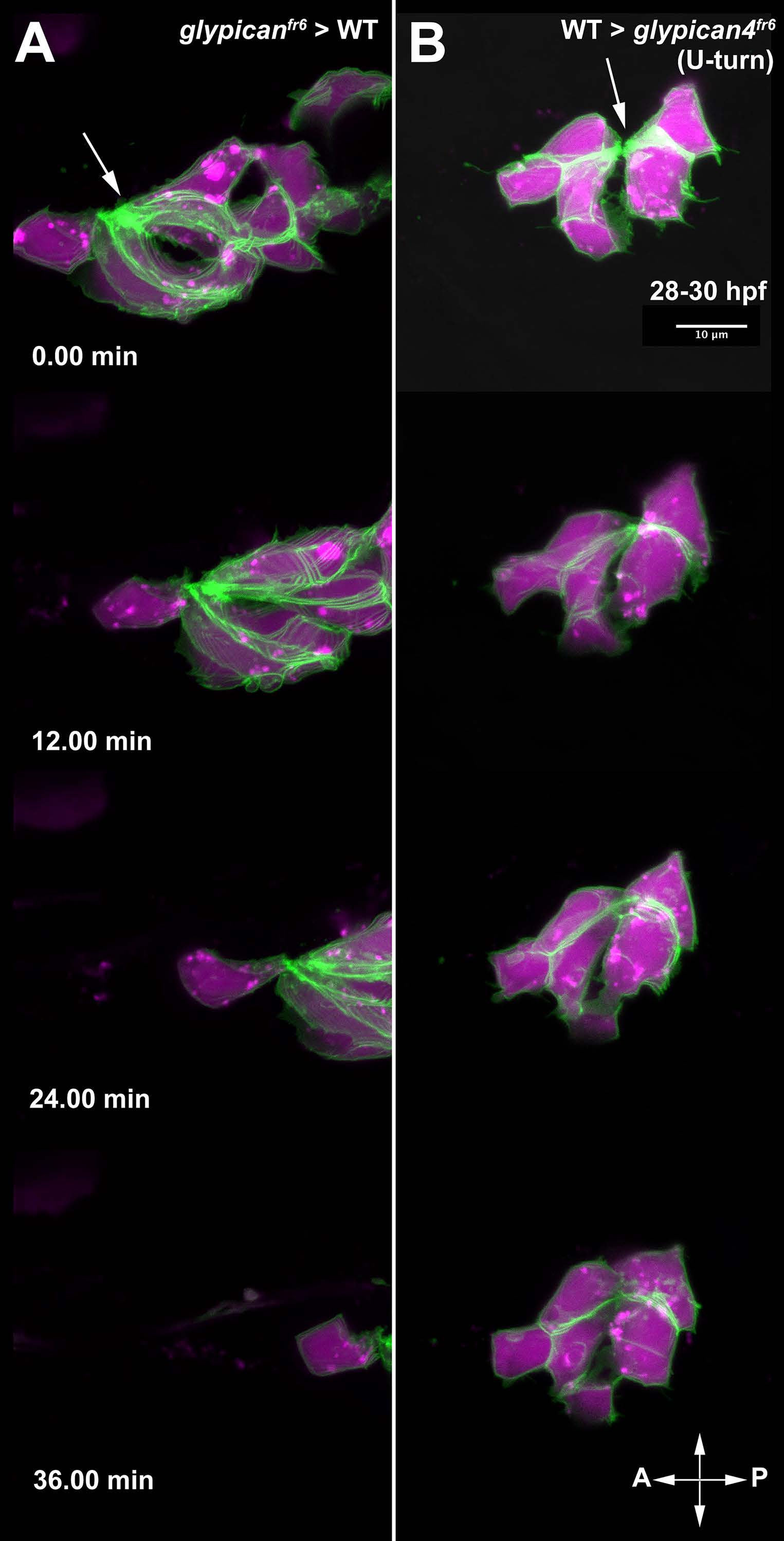Fig. S6
glypican4fr6 mutant primordium cells migrate like wild type cells when transplanted into a wild type embryo. (A) Clone of glypican4fr6 mutant cells (Magenta+/GFP+) in a wild type primordium shows that mutant cells properly migrate toward the tail tip suggesting that the wild type environment rescued them. (B) Wild type primordium clone (Magenta+/GFP+) in a glypican4fr6 mutant environment. The wild type cells become rounder and they do not migrate posteriorly confirming a non-cell autonomous effect of glypican4. White arrows point to rosette constrictions in the primordium. See Movie S4. Anterior is to the left, and posterior is to the right.
Reprinted from Developmental Biology, 419(2), Venero Galanternik M., Lush, M.E., Piotrowski, T., Glypican4 Modulates Lateral Line Collective Cell Migration Non Cell-Autonomously, 321-335, Copyright (2016) with permission from Elsevier. Full text @ Dev. Biol.

